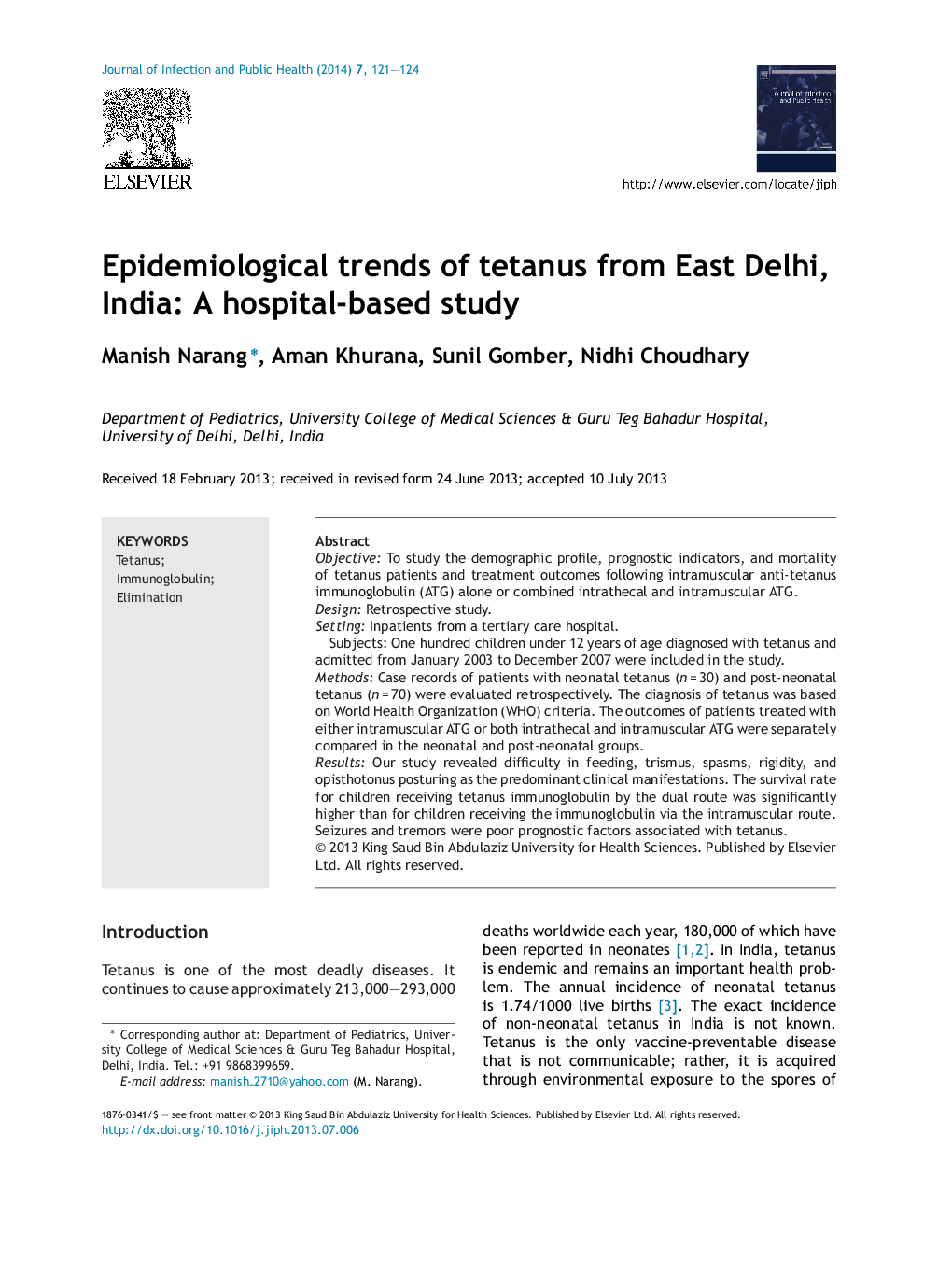| Article ID | Journal | Published Year | Pages | File Type |
|---|---|---|---|---|
| 3406269 | Journal of Infection and Public Health | 2014 | 4 Pages |
ObjectiveTo study the demographic profile, prognostic indicators, and mortality of tetanus patients and treatment outcomes following intramuscular anti-tetanus immunoglobulin (ATG) alone or combined intrathecal and intramuscular ATG.DesignRetrospective study.SettingInpatients from a tertiary care hospital.Subjects: One hundred children under 12 years of age diagnosed with tetanus and admitted from January 2003 to December 2007 were included in the study.MethodsCase records of patients with neonatal tetanus (n = 30) and post-neonatal tetanus (n = 70) were evaluated retrospectively. The diagnosis of tetanus was based on World Health Organization (WHO) criteria. The outcomes of patients treated with either intramuscular ATG or both intrathecal and intramuscular ATG were separately compared in the neonatal and post-neonatal groups.ResultsOur study revealed difficulty in feeding, trismus, spasms, rigidity, and opisthotonus posturing as the predominant clinical manifestations. The survival rate for children receiving tetanus immunoglobulin by the dual route was significantly higher than for children receiving the immunoglobulin via the intramuscular route. Seizures and tremors were poor prognostic factors associated with tetanus.
